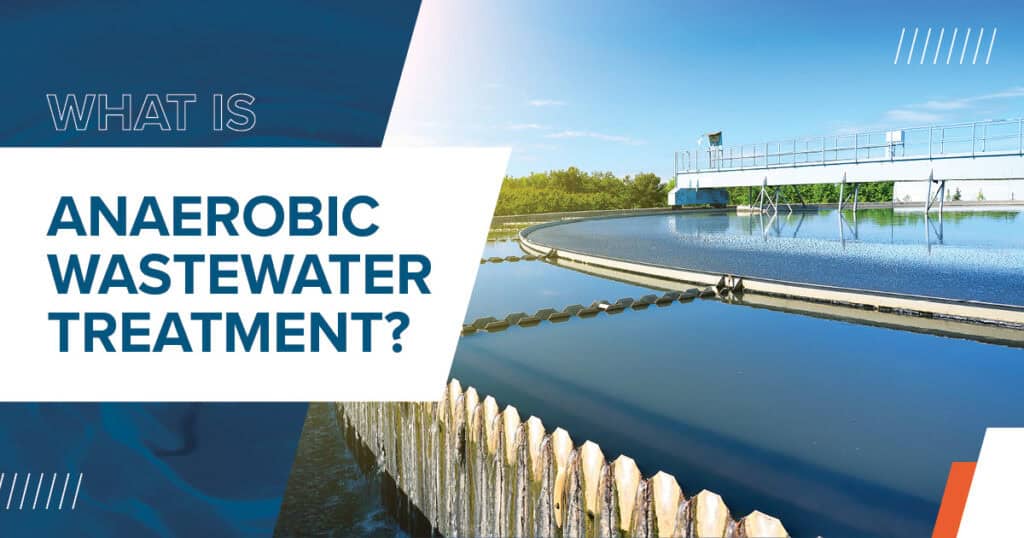Wastewater treatment processes vary based on region, facility design, regulations, and treated water usage, generally consisting of three phases:
- Primary: Removal of solids through flotation or sedimentation.
- Secondary: Removal of organic matter.
- Tertiary: Final treatment depending on the destination of the treated wastewater.
Aerobic vs. Anaerobic Wastewater Treatment
Numerous factors can determine the secondary treatment process. Chemical oxygen demand (COD), biological oxygen demand (BOD), effluent quality, microbial concentration, and overall operating costs may all be considered, along with other treatment objectives. One of the biggest decisions wastewater management facilities have to make is between aerobic and anaerobic treatment.
Aerobic treatment is the more traditional method. It is a biological process that uses oxygen. Oxygen is continuously mixed into the wastewater with an air compressor or blower. The added oxygen supports microorganisms that consume and break down organic contaminants and pollutants. Ultimately, the organic matter is broken down into biomass and carbon dioxide, which can be removed more easily.
Anaerobic wastewater treatment is a similar biological process that depends on microorganisms to break down the organic matter. However, it does not use oxygen. In most anaerobic processes, the wastewater is put in a bioreactor receptacle, which contains microorganisms and bacteria that do not require oxygen—otherwise known as “anaerobes.” They consume and digest the organic pollutants and contaminants while producing an effluent with higher biomethane content, lower BOD, lower COD, and lower total suspended solids (TSS).
Benefits of Anaerobic Treatment
We are seeing more wastewater treatment operations using anaerobic treatment methods—or at least some combination of aerobic and anaerobic treatments. It is a more energy-efficient process that does not require additional oxygen and compressors. Other advantages of anaerobic wastewater treatment are as follows:
• It’s great for wastewater with high solids content.
• It produces biomethane gas for capture and reuse.
• It produces biofertilizer from a more stable digestate.
• It reduces sludge (biomass digestate) runoff.
• It provides a smaller footprint for the anaerobic receptacle and equipment.
Disadvantages of Anaerobic Treatment
Anaerobic wastewater treatment offers many advantages, but it’s also important to understand the disadvantages. It can produce additional odors because of the biomethane that is high in sulfur. Anaerobic treatment does not remove ammonia-nitrogen and other organic materials that are better treated through aerobic processes. Running an anaerobic treatment operation requires additional monitoring of pH levels and temperatures.
Determine Your Best Treatment Plan
It is important to understand how both processes work and the specific advantages or disadvantages of aerobic vs. anaerobic wastewater treatment. Ultimately, the best process may depend on your wastewater material, which organic materials need to be broken down, and what results you are trying to achieve with the treated water output. Aerobic treatment may be best for some facilities, while anaerobic may be preferred for others. In many cases a combination of the two processes is the ideal solution.
To learn more about aerobic and anaerobic wastewater treatment solutions and the best equipment for these applications, contact DXP Pacific today. Let our experts determine the proper approach based on your specific water and wastewater management application.

